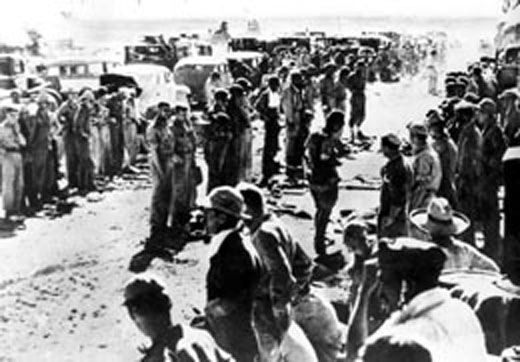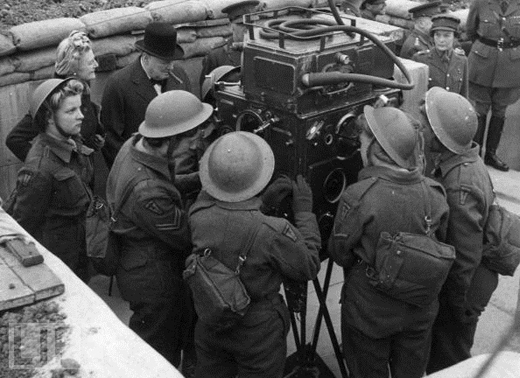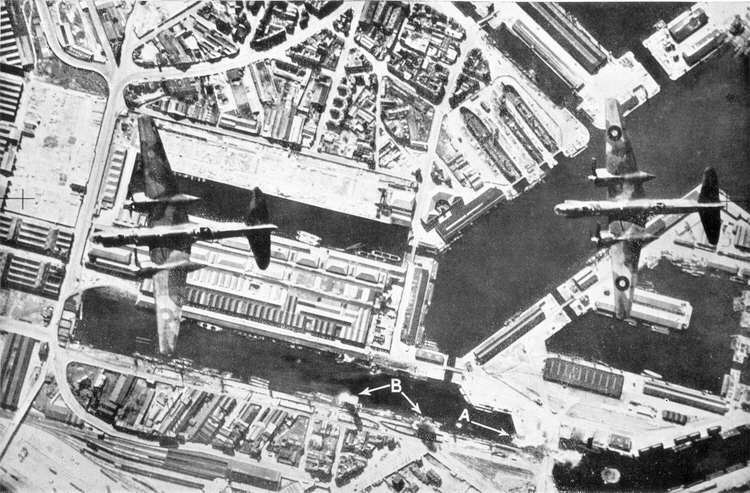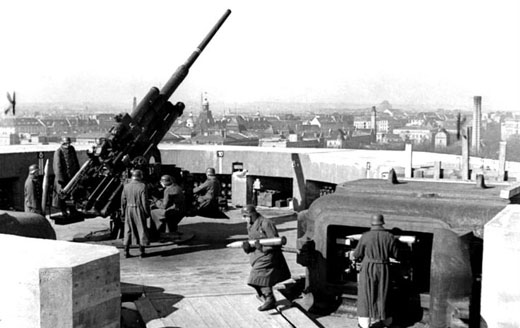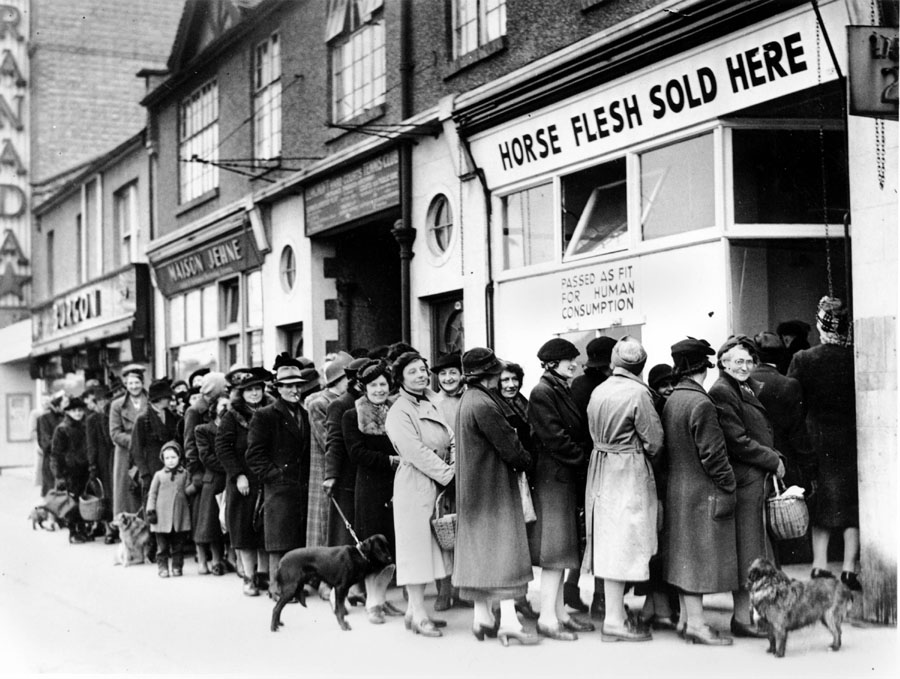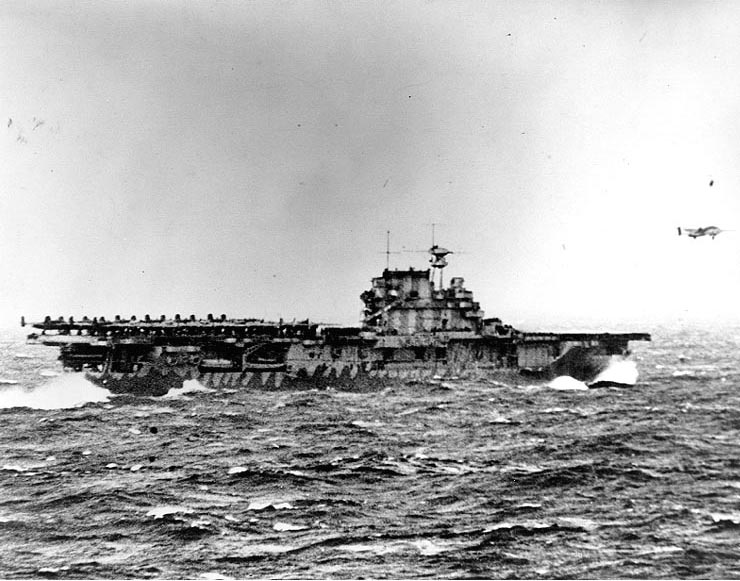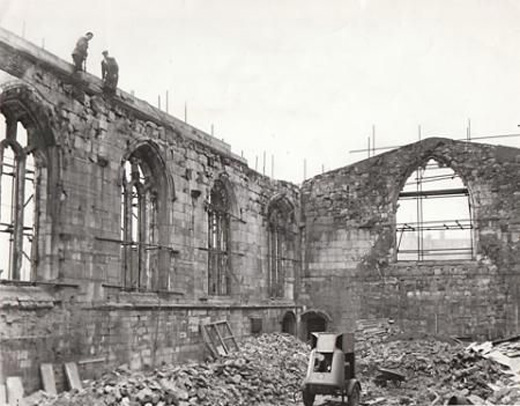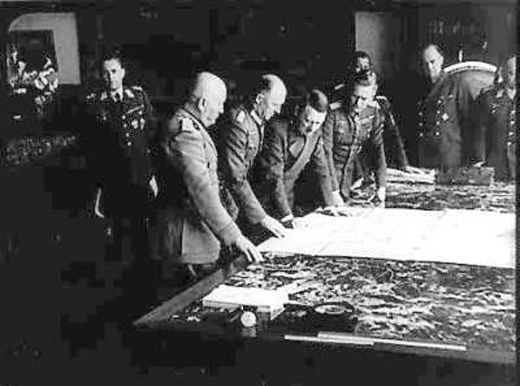Air Operations, Europe
BOMBER COMMAND- 12 Bostons are sent to Boulogne to attack an armed cargo ship. Cloud cover protects the ship so the dock area is bombed instead.
- During the night 34 Wellingtons and 22 Hampdens are sent to Le Havre. A successful bombing mission is claimed, but 1 Wellington is lost. This is the first of 14 RAF raids on Le Havre during the month.
- In another operation 35 Wellingtons and 14 Hampdens are sent to carry out low-level attacks on railway targets. 22 planes successfully carry out this task, but 12 Wellingtons and 1 Hampden are lost. 57 Squadron, based at Feltwell, loses 5 of the 12 Wellingtons dispatched and 214 Squadron based at Stradishall, 7 of its 14 Wellingtons.
- 24 Whitleys and 17 Wellingtons are sent to bomb the Ford factory near Paris. Accurate bombing is claimed by the crews but later photographs do not confirm these claims. 1 Wellington is lost.
- In minor operations 3 Blenheim Intruder flights to Holland turn back, 15 aircraft lay mines off Lorient and in the mouth of the Gironde River, and 5 are on leaflet flights over France. There are no losses in these operations.
Air Operations, Mediterranean
This is the beginning of an 11-day 'blitz' in which the improved Ju-87D Stuka makes its debut attacking Malta. Casualties to shipping either sunk or damaged beyond repair, include the destroyers Gallant, Kingston and Lance, the submarines P-36, Pandora and the Greek Glavkos and the naval tanker Plumleaf. The cruiser Penelope is also damaged.
[Air Operations, New Guinea
6 A-24s from the 3rd Light Bombardment Group's 8th Light Bombardment Squadron attack Lae, New Guinea.
Atlantic
11 Norwegian merchant ships, trapped at Gothenburg since April 1940, attempt to run the German blockade and reach English ports. 2 manage to get through on April 5, 6 are sunk or scuttled and 3 return to Gothenburg.
[Battle of the Atlantic
The British minesweeping trawler Solomon sinks on a mine north of Cromer. There are no casualties.
Convoy in Bedford Basin, Halifax, April 1,1942 |
 |
Britain, Politics
King George VI sends a tribute to Malta's heroic resistance to the island's Governor, Lt-Gen Sir William Dobbie, and announces he has accepted the Colonelcy-in-Chief of the Royal Malta Artillery.
[Burma
The Chinese troops near Toungoo are forced to continue their retreat. The British at Prome are also heavily attacked. The I Burma Corps is ordered to withdraw from Prome to the area of Allanmyo, north of Prome, to avoid encirclement.
[Eastern Front
The spring thaw brings a comparative lull and there is a stalemate along much of the front. There are renewed attempts, however, to free the II Corps of the 16th Army from the Staraya Russa area. In the south Sevastopol reaches its 150th day of siege.
NORTHERN SECTORThe Germans resume their attack toward the Demyansk. The II Corps comes under intense Soviet attack.
SOUTHERN SECTORThe Soviets are building up their forces in the south in preparation for their offensive around Izyum. The Southwest Front deploys the 21st Army (3 rifle and 1 motorized divisions, 1 rifle brigade), the 38th Army (10 rifle and 3 cavalry divisions) and the 6th Army (7 rifle divisions, 1 cavalry division and 2 tank brigades) in the pocket while the headquarters of the 28th Army, together with 7 rifle divisions and 2 tank brigades, are in reserve. Covering the southern face of the pocket are 13 rifle divisions of the 57th and 9th Armies and 9 cavalry divisions, 1 rifle and 6 tank brigades of the II, V and VI Cavalry Corps of the South Front. The 37th, 12th, 18th and 56th Armies, totalling 18 rifle divisions, 6 rifle brigades and 3 tank brigades, complete the line to the Azov Sea.
Covering the Kharkov sector the Germans deploy the XXIX, XVII, LI and VIII Corps of the 6th Army and the IV Rumanian Corps of the 17th Army. In all the 6th has on the Kharkov axis 16 infantry divisions and 2 tank divisions. Facing the South Front the Germans field 26 divisions. These units form Group Kleist, made up from the 17th Army and 1st Panzer Army. On the Mius is the XIV Panzer Corps (2 infantry, 2 panzer and the 1st and 5th SS Motorized Divisions) while to its north, covering the river line to Debaltsevo, are 3 Italian Divisions and the XLIX Mountain Corps (1 infantry, 1 mountain and 1 Slovak division). From Slavyansk to Debaltsevo are 9 infantry division of the XLIV, IV and LII Corps, while the III Panzer Corps is against the southern face of the Barvenkovo pocket.
[Germany, Home Front
Albert Speer, the Minister for Armaments, creates a new system for allocation of raw materials by 'Central Committees, 'Special Committees' and 'Industrial Rents'.
[Malta
2 submarines are sunk by Axis torpedo planes. During the next few months Axis aircraft drop more than 6,700 tons of bombs on Malta. The air defense of the island consists of only a few Hurricanes and Spitfires, though they do manage to check the enemy fighter-bombers and during April they shoot down 37 of them. But this is only one aspect of the critical situation in which the British find themselves in the Mediterranean. They have only 4 cruisers and 15 destroyers against the enemy's 4 battleships, 9 cruisers, 55 torpedo-boats and more than 70 submarines. With such tremendous numerical superiority there is clearly a very real risk of an Axis invasion of Malta.
Naval tanker Plumleaf |
 |
Mediterranean
- The cruiser Giovanni delle Bande Nere is sunk by the British submarine Urge off Stromboli north of Sicily.
- Adm Cunningham leaves the command of the British Mediterranean Fleet to serve on the Combined Chiefs of Staff Committee in Washington.
New Guinea
There are Japanese landings on the coast of Dutch New Guinea from Sorong at the northwest tip of the island to Hollandia now Djajapura. As yet there is almost no opposition to the Japanese forces on New Guinea which continue their buildup for about 3 weeks.
[Pacific
- The US submarine Seawolf (SS-197) torpedoes the Japanese light cruiser Naka off Christmas Island.
- The British submarine HMS Truant sinks Japanese merchant ships Yak Maru and Shunsei Maru in the Malacca Strait 80 miles west-northwest of Panang, Malaya.
Philippines
The Japanese resume major attacks on Bataan. The American and Filipino forces have 24,000 men sick because of short (one-quarter) rations and tropical diseases.
[Solomon Islands
The Japanese occupy Buka Island.
[United States, Home Front
The mass evacuation of Japanese-Americans from the Pacific Coast states begins by the US Army.
Lone Pine, California |
 |






















